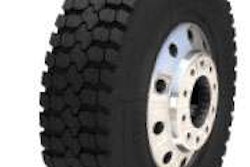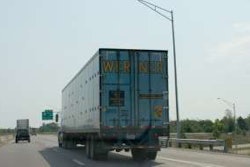While it’s too early to know how much the hours-of-service final rule will impact compliance and productivity, technologies already are available to help combat these challenges
After the Federal Motor Carrier Safety Administration issued its proposal to change the hours-of-service regulations in December 2010, thousands of carriers and drivers sent comments to the agency – many warning of serious economic impacts if driver hours were reduced by any amount.
Time will tell if these dire predictions are true, but in the final rule issued Dec. 22, FMCSA said with certainty that any negative economic impacts will be minimal.
Some carriers are not taking a wait-and-see approach before enforcement begins in 2013. Schneider National is using predictive technology to assess the impact of the final rule on its vast operations with an advanced tactical planning simulator to make decisions based on virtual pilot projections rather than use actual groups of drivers, equipment and company resources.
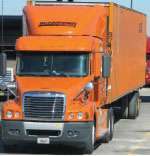 Schneider National’s tactical planning simulator shows management how policy changes impact driver home time, pickup and delivery appointments, asset utilization and other areas.
Schneider National’s tactical planning simulator shows management how policy changes impact driver home time, pickup and delivery appointments, asset utilization and other areas.The TCP shows management how policy changes impact driver home time, pickup-and-delivery appointments, asset utilization and other areas. Schneider used its TCP to assess the proposed rule and now is evaluating the final rule.
Few fleets have the resources to do a similar “pro-forma” assessment of the changes in the HOS final rule – yet most have the technology to boost efficiency in the face of new challenges. When the new rule takes effect, which of these technologies most likely will emerge as the most effective weapons to combat challenges with compliance and productivity?
Electronic logs
All major providers of onboard computing platforms say that between 70 and 85 percent of their deployed units have electronic onboard recorder applications and that virtually all new customers are using electronic logs. Changes in the HOS final rule likely will increase demand because on-duty time will become more difficult to enforce on paper. Consider the new requirement that drivers take a 30-minute break within the first eight hours; drivers and fleets will have to plan and monitor current and previous drive time more carefully.
“Real-time communications and automation helps to coordinate these breaks, causing the least impact to customer service yet staying within legal parameters,” says Drew Hamilton, executive vice president of Teletrac, which offers electronic logs in its FleetDirector platform. “Drivers will be prompted to take a break at the next stop before those first eight hours elapse.”
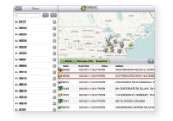 Teletrac offers electronic logs in its FleetDirector platform to automatically monitor and display drive time and let drivers and supervisors see when work can be performed again within legal boundaries.
Teletrac offers electronic logs in its FleetDirector platform to automatically monitor and display drive time and let drivers and supervisors see when work can be performed again within legal boundaries.Electronic logs also eliminate confusion from the 34-hour restart provision. Applications will show drivers when they can return to duty. The off-duty rest period almost always will be more than 34 hours since it must include two nights. The earliest a driver could return to duty is 5 a.m. on the second consecutive night.
Anything that requires tracking over a long period of time always will be more difficult to coordinate on paper, says Eric Witty, product manager for Qualcomm Enterprise Services.
“The challenge on paper isn’t so much logging as it is auditing to ensure compliance,” Witty says. “Having to look back over multiple days of paper for a driver and to manually calculate if enough time has elapsed since the last restart is very time-consuming and prone to error.”
Team driving
Team driving operations are another area where electronic logs will help improve trip planning and compliance. The final rule gives team drivers more flexibility to change duty status: A team driver can remain off duty in the passenger seat for up to two hours in a moving vehicle immediately before or after eight consecutive hours in the sleeper berth.
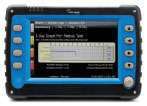 PeopleNet’s eDriver Logs application records logbook data the same way for single and team drivers, with the exception that team drivers cannot both have an ‘on-duty/driving’ status at the same time.
PeopleNet’s eDriver Logs application records logbook data the same way for single and team drivers, with the exception that team drivers cannot both have an ‘on-duty/driving’ status at the same time.Implied in these changes is that the motor carrier will relieve a nondriving team driver of their duties, allowing them to go off duty. Even with electronic logs, the carrier must make operations and driving expectations clear because the driver will be making the final status decision, says Tom Cuthbertson, vice president of development at Xata.
“The driver knows if his current circumstances meet the test of an off-duty or sleeper status,” he says. “An EOBR will accurately indicate, in real time, if the driver and supervisors’ current activities are compliant.”
Within PeopleNet’s eDriver Logs application, drivers can be assigned to a team. The application records logbook data the same way for single and team drivers, with the exception that team drivers cannot both have an “on-duty/driving” status at the same time.
Jim Angel, PeopleNet’s product manager of safety and compliance solutions, says the software does not need to change to accommodate new flexibility for team drivers, but under the current 395.16 regulation for EOBRs, drivers cannot change their duty status while the vehicle is in motion. This is not a problem for a single driver, but when another driver is in the passenger seat, should that driver be able to change his duty status?
“We’re going to have to get an exception from the FMCSA,” Angel says. Some PeopleNet customers with team operations have installed their in-cab display units on swivel mounts. If FMCSA grants an exception to the rule for team operations, a driver in the passenger seat could change his duty status without distracting the driver behind the wheel, he says.
“Most carriers are not looking at ‘What are these new HOS rules going to do to me?’, but ‘How do I run my business once they do change?’ ”
– Mike Glasgow, account executive, Manhattan Associates’ Carrier Suite Total compliance
Managing HOS and other violations included in FMCSA’s Compliance Safety Accountability scoring methodology is spurring more demand for technology to capture violations from multiple sources, including both paper and electronic logs, roadside inspections and systems that capture driving behaviors and critical safety events.
John Christner Trucking, a 900-truck carrier based in Sapulpa, Okla., recently started using the CSAdvantage system from ACS to manage data from both paper and electronic logbooks.
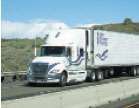 John Christner Trucking, a 900-truck carrier based in Sapulpa, Okla., uses the Web-based CSAdvantage system from ACS to manage data from both paper and electronic logbooks.
John Christner Trucking, a 900-truck carrier based in Sapulpa, Okla., uses the Web-based CSAdvantage system from ACS to manage data from both paper and electronic logbooks.Paper logbooks are scanned and audited using ACS RapidLog software. CSAdvantage captures RapidLog information as well as logbook data from the company’s EOBR system. CSAdvantage also interfaces with Vigillo to display roadside inspection data in a scorecard format. The inspection data is taken directly from FMCSA’s Compass Portal.
With audited driver logbooks and roadside inspection data in one source, JCT uses CSAdvantage’s workflow tools to manage each type of violation. Some violations are assigned to mandatory online training courses from J.J. Keller. The system also is set up to send violation letters to drivers and set up appointments with management based on the severity and number of repeat offenses.
Dispatch and routing
In FMCSA’s final rule, the agency stated that fleets with irregular-route truckload operations likely would see more of an impact than other industry segments. Drivers with an erratic work schedule tend to use the restart provision more often and will experience a reduction in hours.
Dispatch and routing systems have planning tools to help ensure HOS compliance without sacrificing productivity and profitability. Having real-time information integrated into load planning screens brings visibility to drivers’ current and future availability.
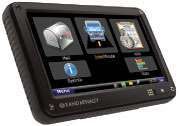 Rand McNally’s TND 760 onboard computing platform provides what has been ‘consumed’ from an hours-of-service perspective, allowing a company to determine how best to utilize its remaining time and assets.
Rand McNally’s TND 760 onboard computing platform provides what has been ‘consumed’ from an hours-of-service perspective, allowing a company to determine how best to utilize its remaining time and assets.“What you are trying to do upfront is to find the feasibility of a driver assignment,” says Robert Brothers, manager of product development at McLeod Software. “By using the HOS information available through mobile communications, you can come up with the feasibility of a driver assignment on the next load as well.”
To facilitate load matching, Rand McNally’s TruckPC and TND 760 onboard computing platforms provide what has been “consumed” from an HOS perspective. With this information, a company can determine how best to utilize the remaining time and assets.
“Our navigation software then will utilize the HOS tracking to determine where a driver will need to stop for the night based on projected time left in his day and distance to an appropriate location,” says Jim Rodi, senior vice president of mobile communications for Rand McNally. “The software will then route the driver on truck-appropriate roads to the destination.”
Once drivers are matched to loads within McLeod’s LoadMaster dispatch and enterprise management software system, additional tools can track the load’s progress to identify out-of-route situations, update arrival times and monitor for detention at customer locations.
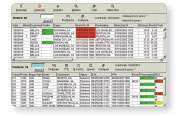 Once a driver-load assignment is made within McLeod Software’s LoadMaster dispatch and enterprise management software system, additional tools can track the load’s progress.
Once a driver-load assignment is made within McLeod Software’s LoadMaster dispatch and enterprise management software system, additional tools can track the load’s progress.Technology also brings precision to the planning process for estimating transit times to schedule runs that are both compliant and productive. ALK recently added traffic speed data to its PC Miler routing software.
Fleet optimization
HOS regulations are just one of many factors to consider when matching drivers to loads. Considering the dynamic nature of fleet operations, it is impossible for a fleet manager to simultaneously consider the feasibility of all possible driver-load combinations – let alone update matches as the day progresses.
Many large and mid-size fleets use optimization software to match drivers and equipment with loads. The software uses real-time HOS information to evaluate each possible match to maximize drivers’ available hours.
Complying with HOS rules is not a configurable option in Driver&Load, an optimization system from Manhattan Associates. “Most carriers are not looking at ‘What are these new HOS rules going to do to me?’, but ‘How do I run my business once they do change?’ ” says Mike Glasgow, account executive for Manhattan’s Carrier Suite. “With a powerful-enough tool, they can acknowledge, identify and adjust in real time how they are running their fleet.”
Once drivers are scheduled and dispatched through Driver&Load, fleets can use Manhattan’s En-Route Assignment application to identify opportunities to swap loads between drivers traveling through the same region to fully utilize driver hours. “Planners have to become more proactive, even with optimization, to ensure their region is in good shape,” Glasgow says.
The new HOS rule may require some fleets to adjust portions of their freight network. TMW Systems offers a network design tool, IDSC Netwise, that integrates with leading dispatch systems to compute a time-based “yield” profitability metric of loads that have been moved and those being evaluated.
TMW also offers a driver-load matching application, IDSC MatchAdvice, that uses current HOS information to calculate the remaining time a driver will have available after delivery. The software finds the next best move for a driver once his current load is completed.
Once a driver is under dispatch, IDSC TripAlert can help to gain time and reduce cost by monitoring the progress of the load. For whatever reason, if the system detects an imminent service failure – caused by a driver running out of hours, going out of route, etc. – the application sends an alert.
Besides enforcing controls, technology provides opportunities to make the most of the resources available. Going forward, fleets will need to use all the tools they can to protect their margins amid constant change.



